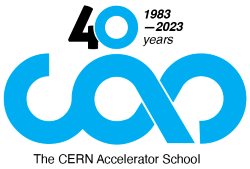Speaker
Description
The design, construction, and operation of accelerator magnets, particularly those employing superconductor technology, pose
challenges in all domains of physics and engineering. These challenges include: Material science aspects, such as the development of superconducting wires and cables, the specification of austenitic and magnetic steel, and the choice of radiation-resistant insulation. Mechanical engineering challenges, such as finding the appropriate force-restraining structure for the coils, the right level of prestress in the coil/collar assembly, the design of manufacturing tooling, coldmass integration, and welding techniques, cryostat integration, and magnet installation and interconnection, all made more difficult by the very tight tolerances required by the optics of the particle beam. The physics of superfluid helium and cryogenic engineering for helium distribution lines, refrigeration, and process control. Vacuum technology for insulation and the beam vacuum. The beam vacuum system must provide an adequate beam lifetime in a cryogenic
system, where heat flow to the 1.9~K helium circuit must be minimized. The science and technology of magnetic measurements of the field homogeneity and magnetic axis. Metrology for magnet alignment in the tunnel. Electrical engineering challenges for power supplies (high current, low voltage), water-cooled cables, current leads using high Tc superconductors, superconducting busbars, diodes operating at cryogenic temperatures, magnet protection and energy extraction systems, and powering interlocks.
In particular, the quench simulation requires bringing together simulations, tests, and measurements to check the validate the empirical parameters used in the simulations. This, in turn, requires modern frameworks for model-based systems engineering (MBSE).
